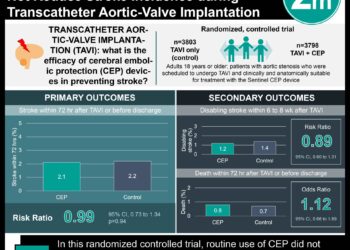2 Minute Medicine Rewind May 30, 2016
Sodium Excretion and the Risk of Cardiovascular Disease in Patients With Chronic Kidney Disease
Patients with chronic kidney disease are at high risk of cardiovascular disease, and it has been postulated to be associated with dietary sodium intake. In this prospective cohort trial, patients with chronic kidney disease had 24 hour urine sodium excretion measured and correlated with composite cardiovascular disease events including congestive heart failure, stroke, or myocardial infarction. In this trial, 3757 patients were followed for a median of 6.8 years of follow-up capturing 804 composite cardiovascular disease events. There was a linear dose-dependent relationship where the cumulative incidence of cardiovascular disease increased with more urinary sodium excretion (p < 0.001). Comparing the highest quartile with the lowest quartile of sodium excretion, there was statistically significantly higher cardiovascular events (HR 1.34, 95% CI 1.03 to 1.74, p = 0.03). At follow-up, the incidence of heart failure was 23.2% vs. 13.3%, myocardial infarction was 10.9% vs. 7.8%, and stroke was 6.4% vs. 2.7%. In this cohort of patients with chronic kidney disease, increased sodium intake and excretion was associated with increased risk of cardiovascular disease.
Right Ventricular Functional Reserve in Pulmonary Arterial Hypertension
Pulmonary hypertension causes excess stress on the right ventricle, causing remodeling and functional impairment. In this article, the authors hypothesize that functional reserve, in the differences in measures of right ventricular function between rest and during exercise, can predict differences in long term differences in prognosis and outcome. In this article, investigators measured right ventricular function and pulmonary vascular load in patients with idiopathic pulmonary arterial hypertension (IPAH) and pulmonary hypertension associated with systemic sclerosis (SSc-PAH) to assess differences during resting and exercise. Patients with IPAH, which have significant better prognosis, had improved systolic function and intracellular calcium recycling (recirculation fracture 0.50 vs. 0.32, p = 0.039). Patients with SSc-PAH, which have substantially worse prognosis, had significantly more right ventricular dilation during exercise compared to rest (end-systolic volume 37% vs. 1%, p = 0.004 and end-diastolic volume (19% vs. -1%, p < 0.001). There appears to be significantly more functional reserve in patients with IPAH than patients with SSc-PAH, which could explain the difference in long term prognosis.
Enzastaurin is a selective protein kinase C beta inhibitor thought to improve disease free survival in patients with diffuse large B-cell lymphoma in remission thought to have high risk of relapse. In this multicenter international randomized trial, patients with stage III or IV DLBCL in complete remission after first-line therapy (R-CHOP) were randomized to either daily oral enzastaurin or placebo and followed for a median of 48 months. The disease-free survival was not statistically significant between the two groups (HR 0.92, 95% CI: 0.70 to 1.22, p =0.541) regardless of initial treatment, PKC beta protein expression, or other pre-specified secondary subset analyses. This trial failed to show a benefit for the addition of enzastaurin in the maintenance phase of first-line treatment of DLBCL.
Effect of Endobronchial Coils vs Usual Care on Exercise Tolerance in Patients With Severe Emphysema
Endobronchial coils are a novel way to compress emphysematous lung tissue and have been preliminarily shown to improve lung function and symptoms in patients with emphysema. In this international multi-center international randomized trial of usual care compared to usual care with bilateral coil treatment, 315 patients with severe air trapping and emphysema were followed for 12 months and evaluated in their performance in 6-minutue-walk tests. At 12 months, patients with coil treatment improved by a median of 14.6 meters vs. patients with standard care worsening 7.6 meters (p = 0.02). A significantly higher proportion improved at least 25m (40.0% vs. 26.9%, p = 0.01). There were also differences in median change in FEV1 and symptoms as determined by St. George’s Respiratory Questionnaire. Unfortunately, there were statistically significantly more pneumonias requiring hospitalization or other major life threatening events (34.8% vs. 19.1%, p = 0.002). There was a 9.7% rate of pneumothorax. The use of endobronchial coils resulted in modest, however of unclear clinical significance, improvement in clinical symptoms and exercise tolerance however had a significantly higher likelihood of major complications.
Image: PD
©2016 2 Minute Medicine, Inc. All rights reserved. No works may be reproduced without expressed written consent from 2 Minute Medicine, Inc. Inquire about licensing here. No article should be construed as medical advice and is not intended as such by the authors or by 2 Minute Medicine, Inc.







